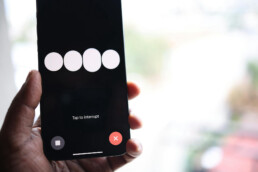- Home
- Collective
- Maximizing Brand Impact with Lead Generation
Maximizing Brand Impact with Lead Generation

Now more than ever, brand authenticity has become a core factor in audience engagement and interactions. Branding is all about building relationships with potential customers which in turn can help ignite conversions. Lead generation plays a pivotal role in branding sectors, acting as a bridge between your designing efforts and your conversion rate results.
What is Lead Generation?
Lead generation is the process of attracting and converting users and potential consumers into an audience interested in a company’s products or services. It’s a fundamental aspect of the business funnel, essential for growing a company. Branding design plays a crucial role in lead generation by creating a strong, recognizable identity that resonates with the target audience. A compelling brand design can help capture attention and also build trust and credibility, encouraging potential customers to engage further with the brand, and ultimately driving conversions.
Many aspects of your branding design can convert. Every blog post, social media update, and advertisement is an opportunity to expose potential customers to your brand and the solutions your company provides. The consistency of your brand’s message and aesthetic across channels can increases recognition.
Emotional Engagement and Authentic Visual Story
Brands that connect with their audiences on an emotional level can generate leads more effectively. Emotional branding uses the powerful psychological pull of emotions to engage customers, fostering a relationship that goes beyond the transactional. When people feel emotionally connected to a brand, they are more likely to provide their contact information or engage in other lead-generating actions. Additionally, today’s consumers highly value authenticity because it fosters trust and relatability in a brand. An audience is more likely to engage with brands that present themselves genuinely, without resorting to overt sales tactics or misleading claims. To achieve authenticity in brand design, focus on clear, honest messaging that aligns with your brand’s core values and mission. This can be reflected in the choice of images, language, and content that resonates with the target audience’s real-world experiences and expectations.
Optimize Your Online Presence
A well-designed, user-friendly website that genuinely reflects your brand’s identity is crucial in attracting and engaging potential customers. It should incorporate clear calls-to-action (CTAs) and opt-in forms that are both prominent and intuitive, facilitating an effortless transition from casual browsing to active engagement. Ensure that your branding—spanning from color schemes and logos to the overall voice and messaging—is consistent across all digital platforms, including social media, to reinforce your brand identity and enhance lead generation efforts.
Beyond aesthetic alignment, content development plays a pivotal role in establishing authenticity and authority. Regularly updated blogs, informative articles, and insightful content optimized for search engines (SEO) not only improve your site’s visibility but also demonstrate your expertise and commitment to your audience’s needs. Engaging, original content that resonates with your target demographic builds trust and encourages repeat visits, which can lead to increased lead conversions. Additionally, leveraging social proof through customer testimonials and case studies on your platforms can further authenticate your brand and bolster your online presence. By strategically integrating these elements, you create a digital footprint that attracts, educates, and converts potential leads.
Incorporating lead generation into your branding strategy is about creating meaningful interactions and building lasting relationships. By focusing on generating quality leads, you can maximize your brand’s impact, reach your business goals, and ensure a sustainable future.
UX Design for AI Products: Merging Innovation with Usability
In the rapidly advancing field of technology, artificial intelligence (AI) has emerged as a transformative force, redefining user experiences across various industries. Designing user experiences (UX) for AI products presents unique challenges and…
Best Practices to Consider Post-Brand Design Refresh
A brand refresh is a pivotal moment for any company, representing an evolution in its mission, vision, or values. While the creative and strategic elements of the refresh are crucial, the steps taken after the reveal can significantly impact its…
Design Systems and AI Technology
As artificial intelligence (AI) becomes increasingly integrated into our daily lives, a brand-focused design language is important. A well-crafted design language enhances user interaction and ensures that AI technologies are accessible,…



